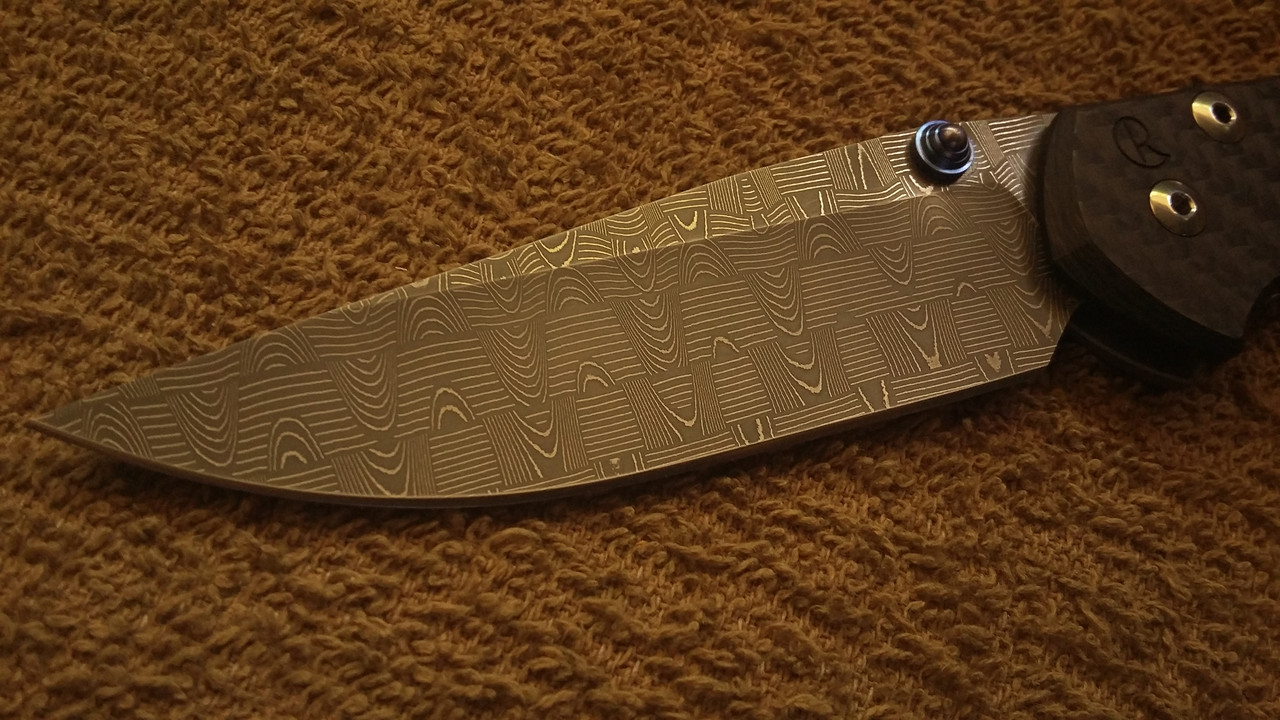I know you were involved in the old Reeve thread from way back, and if you are not throwing rocks, yet, maybe I am safe? Glad you found some things of interest or perhaps some new little tidbit. The large Sebenza is my favorite of the lot as for Reeve, giving nearly old Spyderco Endura size/weight/thickness with one heck of a lot stiffer handle, and far better deep cutter/slicer grind with stronger edge and tip, all while being just as rust resistant. Personally, unless heavy dutiest is what is needed, I would say the buyer is getting more of the premium price precision for which they are paying, in the Sebenza line, too, and why I still buy them over the heavier, simpler/more conventional build, Inkosi, even with the recent targeted 10% price hike slammed on the poor large Sebenza.
Chris was very very big early on as for his knives needing to be rust resistant, not much mentioned today in the now mainly stainless world, his original South Afrika digs of Durban a steamy Indian Ocean coastal city and environment such as Galveston/New Orleans/Mobile/Ft Walton/Panama City miasma in being murder on unprotected or non-stainless. He no doubt had salty fog mornings INSIDE his workplaces, and knew the frustration of rusting good tools and the value of a good sharp cutter in the workplace.
Separate tidbit, as for damascus Reeve knives, I know the composition of ladder and basketweave they use from Devin Thomas, but, ignorant of the Chad Nichols raindrop they use. Formerly, it was all Thomas, but Reeve started demanding larger blanks, Thomas' pattern opened up due to increased rolling/pressing, he knew the fix would require $6000 or more worth of new dies, and from end result, would guess neither he nor Reeve wanted to pay for them.
Did not make clear, but I also like the damascus as it skirts my mental conflicts with older and newer grinds and finishes....it has the new stronger grind, but is not pre-scratched stonewash, yet still hides scratches better than the higher finish, while still looking elegant. A win all the way around, aside for $200 premium on the knives. If you go to either damascus maker, you will see Reeve essentially charging what an individual would pay for a blank, just as a preemptive strike as to griping, in which case you can gripe as to not being given $35 credit for the exchanged S35Vn blank along with less wear and tear on belts....whatever.
The no-guesswork Rc on the damascus quoted by Reeve currently is 56-58, which is a large spread, but totally understandable when knowing them using damascus from two different suppliers. Almost certain they hit 57-58 with the known and long used Thomas stuff and using known AEB-L heat treat including cryo quench to keep the fine grained micro carbide dispersion for which the steel famous.
Lifted damascus quote off the Thomas site...."Roman Landes and John Verhoeven have both done different tests with AEB-L. In CATRA testing Dr. Verhoeven found AEB-L to outcut 52100, 1086, and Wootz damascus. He also found AEB-L to be able to take a smaller edge radius than 52100 in controlled sharpening tests. Roman Landes found AEB-L to have greater edge stability, toughness, and wear resistance than 52100. Edge stability is a property that describes a steel's ability to hold a finely sharpened edge. 52100 is one of the most well respected carbon steels, and is well known for its small carbides, high toughness, and high edge stability, so it's impressive that AEB-L was able to beat it in these categories, while also having greater wear resistance and being a stainless steel. Many users have reported that AEB-L sharpens as easily as any other carbon steel they have used." ...A reality check being not one of those holds a candle to raw paper cutting of the S35Vn. But, obviously a really good tough steel, and will add quite a bit tougher than the mentioned 52100-B mentioned above.
One other tidbit, mainly for the flicker crowd, or those still young enough to worry over outliving their Sebenza rather than next pair of shoes, but....has to do with the Sebenza stop pin bushing and the beating it takes, and long term use and wear. Given the stop pin is the final reference which spells out how much lock engagement is on opposite side of blade when opened, if you ever feel your lock is engaging deeper and deeper due to "wear", you might find that wear mysteriously vanishes when the stop pin bushing/spacer rotated to get undeformed metal surface in contact with back of blade. This also can be a local machine shop fix many moons from now in having a guy turn a new spacer of same length and inside diameter, and to slightly larger outside diameter, and likely from existing standard bushing predrilled stock.
Simply because I can, a gratuitous shot of the basketweave damascus by Pablo Picasso, or, maybe Devin Thomas. And right after opening several heavily taped manila bubble mailers and being wiped on yon towel. Showing blade portion can always be re-etched at home when it finally wears. Do NOT etch hinge portion of blade.


